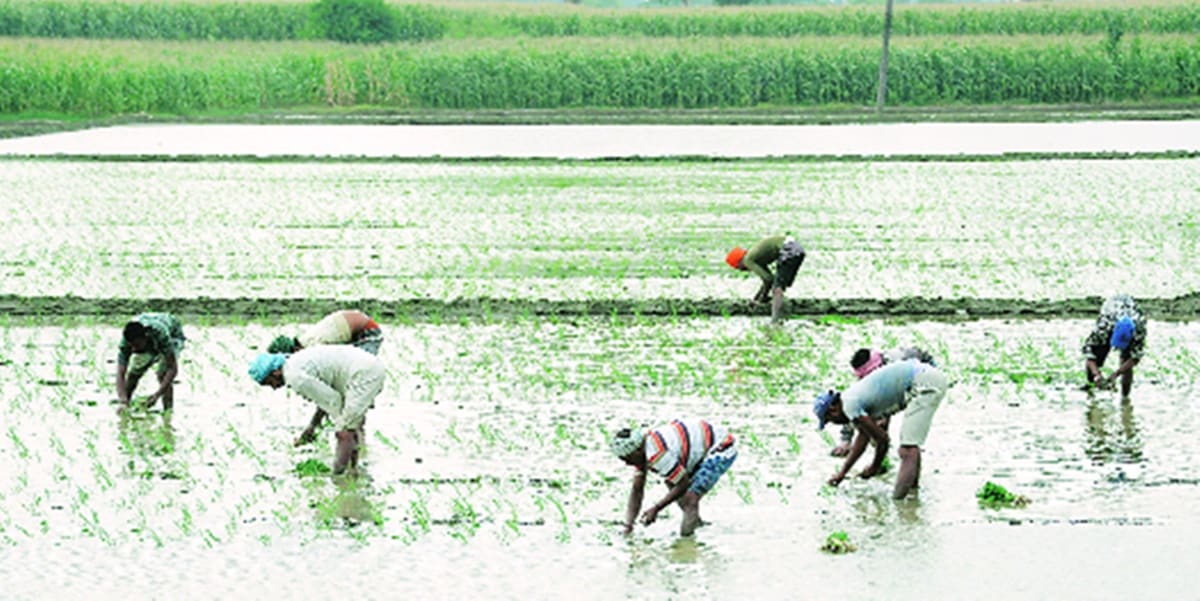 The GoE said free farm power scheme encourages farmers to opt for water-guzzling paddy crop, leading to excessive use of ground water resulting in an “alarming” fall in water table. Express
The GoE said free farm power scheme encourages farmers to opt for water-guzzling paddy crop, leading to excessive use of ground water resulting in an “alarming” fall in water table. ExpressIn its first report, the Group of Experts (GoE) set up to come out with a strategy for Punjab’s economic revival has called free farm power a major burden on the state’s finances, while urging government to pursue a switch to solar pumps and Direct Benefit Transfer electricity scheme in over-exploited blocks.
Withdrawal of subsidy is a major political issue for any government in the state with farmers being a prominent vote bank. All opposition parties play to the gallery and oppose any move in that direction by incumbent governments.
The GoE in its report has stated that the free power policy has damaging consequences on Punjab’s finances as it has led not only to an unsustainable burden on the budget, but in 2021, the subsidy amounts to almost 1.9 per cent of GSDP.
This subsidy, it adds, limits Punjab’s ability to incur other expenditures essential for state’s development and the same is reflected by the fact that total capital expenditure in the budget is only about 1.6 per cent of GSDP.
The GoE further states that the policy has very damaging environmental consequences as it encouraged farmers to opt for water-guzzling paddy crop more and more. This leads to excessive use of ground water resulting in an “alarming” fall in water table. “Finally, the policy is highly regressive since most of the subsidy accrues to larger farmers,” the report says.
It adds: “Economists have repeatedly argued that electricity pricing for agriculture must be rationalised and if there is a case for subsidy for farmers it should be through direct cash subsidies to deserving farmers.
This is undoubtedly technically correct, but we also recognise that there are political constraints that have led to the state government to reject any change in the present policy regarding electricity tariffs for farmers.
If it is not politically feasible to rationalise the power tariff in the near future, the state may have to work with second best solutions to start with.”
The report notes that the government has already announced that it will not adjust power tariffs.
“We would urge that the issue of rationalisation of electricity tariff should not be taken off the agenda for the future and in case reform is not immediately possible. The government should pursue second best approaches that would reduce the distortionary effect of free power.”
Voting for Direct Benefit Transfer scheme being implemented in a few feeders, the GoE has said it may offer a way to reduce the use of electricity. The report says that the scheme needs to be evaluated by a third party and if found successful, can be scaled up over the next 2-3 years to all over-exploited blocks.
It adds that these schemes create an incentive to save water and mitigate environmental damage, but they do not reduce the budgetary burden of the power subsidy
The report has also recommended solar pumps by providing capital subsidy to the farmers. “It will be a burden on the budget but would be offset by saving in the power subsidy over the next three to four years. One can also invite private investment for solarisation of Punjab farms on attractive feed in tariff offers. It would provide day-time reliable power to agriculture, and also increase farmers’ income if they can sell electricity to the grid at remunerative rates,” says the report.